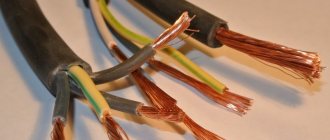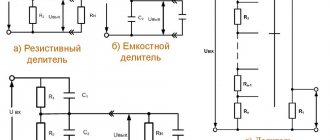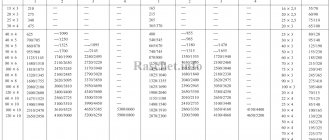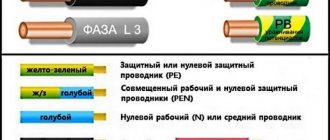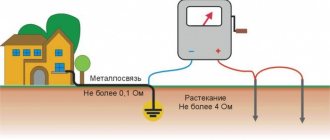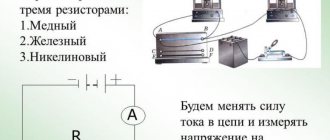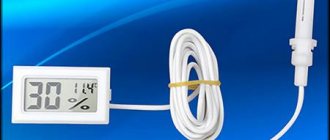Basic concept
Ever since the days of secondary school, namely such a subject as physics, information about the resistivity of the conductor has been present in our memory. Some people will no longer remember the exact definition, but they will remember for the rest of their lives what this term represents. Let us consider in more detail what the definition of this term sounds like - this is a physical component that characterizes the properties of a conductive component that interferes with the passage of electricity. This value is equal to the voltage present at the ends of the wire and the current that flows through this element. In this particular case, we looked at what determines the resistance of the conductor used. In addition, special formulas were provided in physics lessons that made it possible to calculate the necessary values of a given quantity, knowing only individual variables. While most people may not need this in everyday life, in a number of exceptional cases, when carrying out repair work on their own, the previously provided information may be required. Those who deal with electricity on an ongoing basis need to know all the information about this value.
Important. Previously, we looked at what resistance is, however, in order to more accurately understand this term, we should also consider additional information, as well as the calculation procedure and the materials used.
What is electrical resistance
Electrical resistance is a physical quantity that characterizes the properties of the conductor itself to prevent the passage of electric current. How to determine the resistance value? It can be expressed by the ratio of the voltage at the ends of the conductor to the current that flows through it.
Electrical resistance of a conductor occurs at the moment when electric current flows through it.
It is worth remembering that the greater the resistance of the conductor, the less it conducts electric current through itself, and vice versa.
What does it depend on
The electrical resistance of the conductors used is not a constant value, it depends on a number of individual points. Let us consider in more detail the dependence of this value:
- A material that is used as a conductive element for electric current.
- The length, and in addition, the cross-sectional area of the wiring used, which are present in the circuit.
- The order of connecting resistors and wiring (parallel or series combination).
- In addition, the dependence of the conductor on the temperature that is present inside the conductive element is highlighted.
- A load that is applied from a power source to the ends of a conductive element where the size is calculated.
- The amount of electrical current that is present within a single closed circuit used to calculate values.
- The existing atmosphere (for example, in sub-zero weather and on a hot day, the resistance of some materials is different).
- The age of the source of energy passage used (as is known, any material deteriorates over time, which is why its resistance decreases).
Important. In practice, metals are almost always used as conductive materials, since these elements have the smallest size, which allows electricity to move freely through them.
Conductor/circuit resistance.
The term “resistance” already speaks for itself
So, resistance is a physical quantity that characterizes the properties of a conductor to impede (resist) the passage of electric current.
Consider a copper conductor of length l with a cross-sectional area equal to S:
Conductor resistance depends on several factors:
- conductor resistivity rho
- conductor length l
- conductor cross-sectional area S
Specific resistance is a tabular value. The formula with which you can calculate the resistance of a conductor is as follows:
R = rhomedspace frac{l}{S}
For our case, rho will be equal to 0.0175 (Ohm * sq. mm / m) - the resistivity of copper. Let the length of the conductor be 0.5 m and the cross-sectional area be 0.2 sq. mm. Then:
R =0.0175 cdot frac{0.5}{0.2} = 0.04375medspace Ohm
As you already understood from the example, the unit of measurement for resistance is Ohm
With the resistance of the conductor clear, it’s time to study the relationship between voltage, current and circuit resistance.
Concept of electrical resistance of a conductor
It is caused by a certain ability of the substances and materials that make up the conductor to resist charged particles moving inside this conductor. During this process, part of the electrical energy can be converted into other types, for example, into thermal energy. The basic unit of resistance measurement is .
The essence of resistance is directly related to the structure of substances. In solids, atoms and molecules have fields that are tightly coupled to each other. The basis of their structure is the crystal lattice. Each atom has electrons rotating in its orbits. Those of them that are located furthest from the nucleus most often break off and land on nearby atoms. They are called free electrons, which allow conductors to conduct electric current.
Ohm's law.
And here the fundamental law of all electronics – Ohm’s law – comes to our aid:
The current in a circuit is directly proportional to the voltage and inversely proportional to the resistance of the section of the circuit in question.
Let's consider the simplest electrical circuit: As follows from Ohm's law, the voltage and current in the circuit are related as follows:
I = frac{U}{R}
Let the voltage be 10 V and the circuit resistance be 200 ohms. Then the current in the circuit is calculated as follows:
I = frac{10}{200} = 0.05 = 50medspacemA
What is the cause of electrical resistance
The reason for electrical resistance is that electrons, as they move, experience collisions with metal ions. These collisions produce the same result as the action of some constant frictional force, tending to slow down the movement of electrons.
If there is no answer for the subject Physics or it turns out to be incorrect, then try using the search for other answers in the entire site database.
Now we can understand why metals resist electric current, that is, why in order to maintain a long-lasting current it is necessary to maintain a potential difference at the ends of the metal conductor all the time. If the electrons did not experience any interference in their movement, then, being brought into ordered motion, they would move by inertia, without the action of an electric field, for an unlimited time. However, in reality, electrons experience collisions with ions. In this case, the electrons, which had a certain speed of ordered motion before the collision, will rebound after the collision in arbitrary, random directions, and the ordered motion of the electrons (electric current) will turn into disordered (thermal) motion: after eliminating the electric field, the current will very soon disappear. In order to obtain a long-lasting current, after each collision it is necessary to drive the electrons again and again in a certain direction, and for this it is necessary that a force acts on the electrons all the time, that is, that there is an electric field inside the metal.
The greater the potential difference maintained at the ends of a metal conductor, the stronger the electric field inside it, the greater the current in the conductor. The calculation, which we do not present, shows that the potential difference and current strength must be strictly proportional to each other (Ohm's law).
Moving under the influence of an electric field, electrons acquire some kinetic energy. During collisions, this energy is partially transferred to the lattice ions, causing them to undergo more intense thermal motion. Thus, in the presence of current, the energy of the ordered movement of electrons (current) is constantly transformed into the energy of chaotic movement of ions and electrons, which represents the internal energy of the body; which means that the internal energy of the metal increases. This explains the release of Joule heat.
How is conductor resistance formed?
Modern views say: free electrons move along a conductor at a speed of about 100 km/s. Under the influence of the field arising inside the drift is ordered. The speed of carrier movement along tension lines is low, amounting to a few centimeters per minute. During their movement, electrons collide with atoms of the crystal lattice, and a certain portion of the energy turns into heat. And the measure of this transformation is usually called the resistance of the conductor. The higher it is, the more electrical energy is converted into heat. The operating principle of heaters is based on this.
Parallel to the context is the numerical expression of the conductivity of the material, which can be seen in the figure. To obtain the resistance, one is divided by the specified number. The progress of further transformations is discussed above. It can be seen that the resistance depends on the parameters - the temperature movement of electrons and their free path, which directly leads to the structure of the crystal lattice of the substance. Explanation: The resistance of the conductors is different. Copper has less aluminum.
Conductor resistance
So why not apply all these properties to a conductor as well? The thinner and longer the conductor, the greater its resistance to electric current. The material from which it is made also plays an important role.
Therefore, the final formula will take the form
In technology, the outdated unit of measurement of resistivity Ohm × mm 2 /m is still used. To convert to Ohm × m, just multiply by 10 -6, since 1 mm 2 = 10 -6 m 2.
As you can see from the table above, silver has the lowest resistivity, so a silver wire will be the best conductor. Well, the most common and cheapest conductors are copper and aluminum. It is these two metals that are mainly used in the entire electronics and electrical industry.
Substances that offer the least resistance to electric current and have very little resistance are called conductors, and substances that have very high resistance to electric current and almost do not allow it to pass through themselves are called dielectrics. Between them stands the class of semiconductors.
Electrical resistance of current.
Electrical resistance is a physical quantity that characterizes the ability of a conductor to influence the electric current flowing in the conductor.
- Quantity designation: R
- Unit: Ohm
As a result of experiments with conductors, it was determined that the relationship between current strength and voltage in an electrical circuit also depends on the size of the conductor used, and not just on the substance. The influence of conductor sizes will be discussed in more detail in a separate lesson.
What causes current resistance ? During the movement of free electrons, constant interaction occurs between the ions included in the structure of the crystal lattice and the electrons. As a result of this interaction, the movement of electrons slows down (in fact, due to the collision of electrons with atoms - nodes of the crystal lattice), due to which current resistance is created.
Another physical quantity is also associated with electrical resistance - current conductivity , the reciprocal of resistance.
Basic mechanism of conductor resistance
The current in a conductor is created by the directed movement of free electrons. Electrons, accelerated in an electric field, continue to simultaneously participate in thermal chaotic motion, colliding with neutral and charged atoms located at the nodes of the crystal lattice. The electrons give up excess acquired kinetic energy (“slow down”) to atoms that are heavier in mass (neutral and ionized).
This creates resistance to the unidirectional movement of free electrons. Differences in the lattice structure, sizes and masses of atoms of different substances are the reasons why the electrical resistance of conductors can differ significantly from each other.
Rice. 1. Collisions of electrons with atoms limit the electric current in a conductor and create resistance.
Formula how to find
According to the provision from any textbook on electrodynamics, the resistivity of the conductor material formula is equal to the proportion of the total resistance of the conductor per cross-sectional area, divided by the conductor length. It is important to understand that the final indicator will be influenced by temperature and the degree of material purity. For example, if you add a little manganese to copper, the overall indicator will be increased several times.
Interestingly, there is a formula for inhomogeneous isotropic material. To do this, you need to know the electric field strength with the electric current density. To find it, you need to divide the first quantity by the other. In this case, the result is not a constant, but a scalar quantity.
Ohm's law in differential form
There is another, more difficult to understand formula for an inhomogeneous anisotropic material. Depends on the tensor coordinate.
You might be interested in How to measure voltage
It is important to note that the relationship between resistance and conductivity is also expressed by formulas. There are rules for finding isotropic and anisotropic materials through tensor components. They are shown in the diagram below.
Relationship with conductivity, expressed in physical relationships.
Physics 8th grade. Resistance. Units of resistance. Ohm's law.
Physics 8th grade.
Abstract. Resistance Physics 8th grade. Resistance. Units of resistance. Ohm's law.
Problems on the topic Electricity
The current strength in a circuit depends not only on the voltage, but also on the properties of the conductors included in the circuit. The dependence of the current on the properties of the conductor is explained by the fact that different conductors have different electrical resistance.
Electrical resistance is a physical quantity. It is designated by the letter R. The unit of resistance is taken to be 1 Ohm - the resistance of a conductor in which, at a voltage of 1 V, the current strength is 1 A.
1 Ohm = 1V/1A
Other units of resistance are also used: milliohm (mOhm), kilohm (kOhm), megaohm (Mohm).
1 mOhm = 0.001 Ohm
1 kOhm = 1000 Ohm
1 MOhm = 1,000,000 Ohms
The cause of resistance is the interaction of moving electrons with ions in the crystal lattice. Different conductors have different resistance due to differences in the structure of their crystal lattice, due to different lengths and cross-sectional areas.
Ohm's law:
The current strength in a section of a circuit is directly proportional to the voltage at the ends of this section and inversely proportional to its resistance.
where I is the current strength in a section of the circuit, U is the voltage of this section, R is the resistance of the section.
Resistance R is a constant value for a given conductor and does not depend on either voltage or current. If the voltage on a given conductor increases several times, then the current strength in it will increase by the same amount, but the ratio of voltage to current strength will not change.
Resistance is directly proportional to the length of the conductor, inversely proportional to its cross-sectional area and depends on the substance of the conductor .
Specific resistance is a physical quantity that determines the resistance of a conductor made of a given substance with a length of 1 m and a cross-sectional area of 1 m2.
Conductor resistance
where ρ is the resistivity of the conductor, l is the length of the conductor, S is the cross-sectional area.
Resistivity:
Resistivity units:
1 Ohm m or (1 Ohm mm2)/m
Resistivity changes with temperature.
Example:
For metals, resistivity increases with increasing temperature
Of all the metals, copper and silver have the lowest resistivity - they are the best conductors of electricity.
Porcelain and ebonite have high resistivity and are used as insulators.
To regulate the current in the circuit, a special device is used - a rheostat.
The abstract was compiled based on the theoretical material of the textbook “Physics 8th grade” by A.V. Peryshkin
Tasks
Download abstract:
teoriya_8_soprotivlenieediniczysoprotivleniya
Related posts:
Physics 8th grade. Quantity of heat. Specific heat. Fuel.
Physics 8th grade. Thermal phenomena. Internal energy.
Physics 8th grade. Electricity. Current strength
Physics 8th grade. Melting and crystallization
Current resistance formulas.
Let's consider the relationship between the quantities studied in the last lessons. As was said, with increasing voltage, the current , these quantities are proportional: I~U
An increase in conductor resistance leads to a decrease in current in the circuit, thus these values are inversely proportional to each other: I~1/R
As a result of the research, the following pattern was revealed: R=U/I
We describe how to obtain a unit of current resistance : 1Ohm=1V/1A
Thus, 1 Ohm is the current resistance at which the current in the conductor is 1 A, and the voltage at the ends of the conductor is 1 V.
In fact, a current resistance of 1 ohm is too small and in practice conductors with a higher resistance (1 kOhm, 1 MOhm, etc.) are used.
Current resistance , current and voltage are interrelated quantities that influence each other. This will be discussed in more detail in the next lesson.
Electrical resistance
Share
The substance (metal) from which the conductor is made affects the passage of electric current through it and is characterized by the concept of electrical resistance. Electrical resistance depends on the size of the conductor, its material, temperature:
- -the longer the wire, the more often moving free electrons (current carriers) will collide with atoms and molecules of matter on their path - the resistance of the conductor increases;
- - the larger the cross-section of the conductor, the more space there is for free electrons, the number of collisions decreases - the electrical resistance of the conductor decreases.
Conclusion: the longer the conductor and the smaller its cross-section, the greater its resistance and vice versa - the shorter and thicker the wire, the lower its resistance, and the better its conductivity (ability to pass electric current).
To put it simply, the dependence of the resistance of a conductor on temperature can be represented as follows: electrons moving along the conductor collide with atoms and molecules of the conductor itself and transfer their energy to them. As a result, the conductor heats up, and the thermal, random movement of atoms and molecules increases. This further slows down the main flow of electrons along the conductor. This explains the increase in the resistance of the conductor to the passage of electric current when heated.
When heating or cooling metal conductors, their resistance increases or decreases accordingly, at the rate of 0.4% for every 1 degree. This property of metals is used in the manufacture of temperature sensors.
Semiconductors and electrolytes have the opposite property than conductors - as the heating temperature increases, their resistance decreases.
The unit of measurement of electrical resistance is 1 Ohm (in honor of the scientist G. Ohm). A resistance of 1 Ohm is equal to a section of an electrical circuit through which a current of 1 Ampere passes when a voltage drop across it of 1 Volt,
Sometimes they use the reciprocal value of electrical resistance. This is electrical conductivity, denoted by the letter g or G - Siemens (in honor of the scientist E. Siemens).
Electrical conductivity is the ability of a substance to pass electric current through itself. The greater the resistance R of a conductor, the less its conductivity G and vice versa. 1 Ohm = 1 Sim
Derived units:
1Sim = 1000mSim, 1Sim = 1000000μSim.
When it is necessary to calculate the total resistance of series-connected conductors, it is more convenient to operate with Ohms. if you are calculating the total resistance of parallel-connected conductors, it is more convenient to count in Sims and then convert to Ohms.
Metals have the highest conductivity: silver, copper, aluminum, etc., as well as solutions of salts, acids, etc. Insulators have the lowest conductivity (highest resistance): mica, glass, asbestos, ceramics, etc...
To make it more convenient to carry out calculations of the electrical resistance of conductors made of various metals, the concept of conductor resistivity was introduced. The resistance of a conductor 1 meter long, with a cross-section of 1 mm. sq. at a temperature of + 20 degrees, this will be the resistivity of the conductor “p”.
The resistivities of conductors of some metals are given in the table.
The table shows that among metals, silver has the best conductivity. But it is very expensive and is used as a conductor in exceptional cases.
Copper and aluminum are the most common materials in electrical engineering. Wires and cables, electrical busbars, etc. are made from them. Tungsten, constantan, and manganin are used in various heating devices and in the manufacture of wirewound resistors.
When using wires and cables in electrical installations, it is necessary to take into account their cross-section in order to prevent their heating and, as a rule, damage to the insulation, as well as to reduce the voltage drop and power loss when transmitting electrical energy from the source to the consumer.
Below is a table of permissible current values in a conductor depending on its diameter (section in mm2), as well as the resistance of 1 meter of wire made from different materials.
Examples of calculations for some electrical circuits can be found here.
Share
What does it depend on
Resistance depends on temperature. It increases when the thermometer rises. This is explained by physicists in such a way that as the temperature increases, atomic vibrations in the crystalline conductor lattice increase. This prevents free electrons from moving around.
Note! As for semiconductors and dielectrics, the value decreases due to the fact that the structure of the concentration of charging carriers increases.
Temperature dependence as the main property of conductive resistance
Electric current and resistance
In the case when a constant external power source is connected, creating an electric field, an orderly movement of free electrons begins to occur from end to end inside the conductor. If there were no obstacles, then such a conductor would have zero resistance and superconductivity. In some cases, in conditions of ultra-low temperatures, it is possible to achieve a similar result.
Under normal conditions, at normal temperatures, certain obstacles arise in conductors that impede the free passage of electrons. Because of this, a situation arises called electrical resistance of the conductor.
Resistivity of different materials
It is important to note that the resistance of metal single crystals with metals and alloys is different. Values vary due to chemical metallic purity, formulation methods, and variability. It's also worth keeping in mind that the values change as the temperature changes. Sometimes resistance drops to zero. In this case, the phenomenon is called superconductivity.
It is interesting that under heat treatment, for example, annealing of copper, the value increases 3 times, despite the fact that the proportion of impurities in the durable, anti-corrosion and light composition is, as a rule, no more than 0.1%.
Note! As for the annealing of aluminum, lead or iron, the value under the same conditions increases by 2 times, despite the presence of impurities in the amount of 0.5% and the need for more energy for melting.
Table of composition values at a temperature of 20 degrees Celsius
In general, electrical resistivity is a physical quantity that characterizes the ability of a substance to prevent electric current from passing through. According to SI, it is measured in ohms multiplied by meters. Depends on the increase in temperature of the substance. You can find the value using the formula for the ratio of total resistance and cross-sectional area divided by the length of the conductor. As for the resistivity of alloys, according to the studies of various scientists, their composition is not constant and can be changed by heat treatment.
Sources
- https://electrica.info/provoda-i-kabeli/chto-takoe-soprotivlenie-provodnika/
- https://microtechnics.ru/tok-napryazhenie-soprotivlenie-zakon-oma/
- https://VashTehnik.ru/enciklopediya/soprotivlenie-provodnika.html
- https://www.calc.ru/Soprotivleniye-Toka.html
- https://rusenergetics.ru/ustroistvo/udelnoe-soprotivlenie
The essence of the concept of “resistance”
Definition 1
Resistance is a physical quantity characterizing the medium (conductor) through which electric current flows.
From a physical point of view, resistance is due to the fact that charged particles, moving from one end of the conductor to the other, collide with atoms of its crystal lattice or other elementary particles of the medium. Therefore, the flow of current under normal conditions is associated with the release of a certain amount of heat due to such collisions, i.e. with energy losses.
Note 1
When conductors are cooled to ultra-low temperatures, the phenomenon of superconductivity occurs in them, when the resistance becomes zero.
Finished works on a similar topic
- Course work Unit of measurement of resistance 460 rub.
- Abstract Unit of measurement of resistance 220 rub.
- Test work Unit of measurement of resistance 220 rub.
Receive completed work or specialist advice on your educational project Find out the cost
Resistance depends on the following factors:
- material (for example, tungsten has higher resistance than copper);
- geometric shape (the longer the conductor and the thinner its cross-section, the greater the resistance);
- temperature (the higher it is, the greater the resistance), etc.
From Ohm's law, resistance can be expressed as
$R = \frac{U}{I}$,
where $U$ is voltage, $I$ is current.
